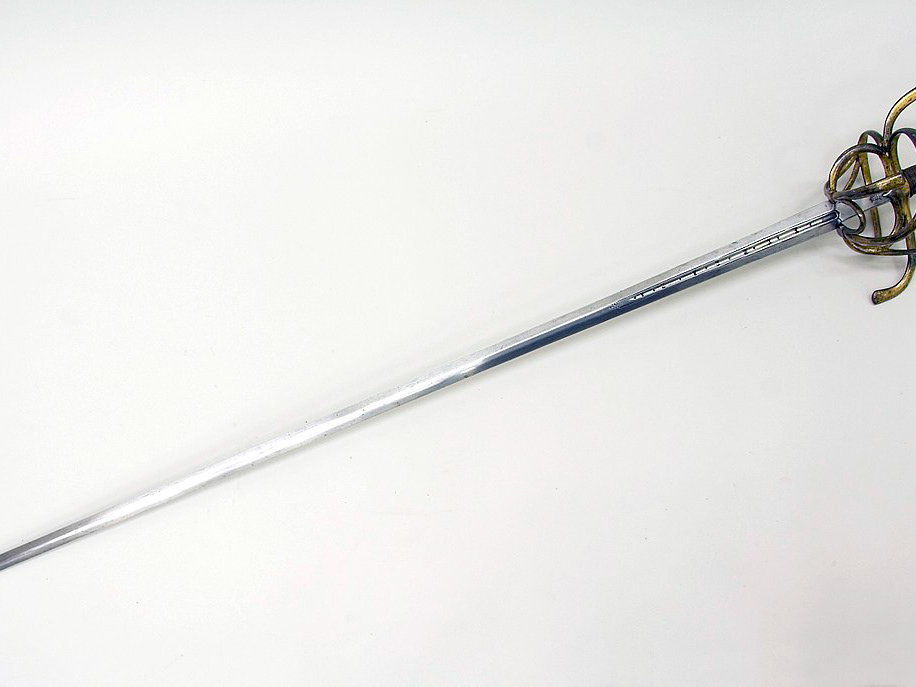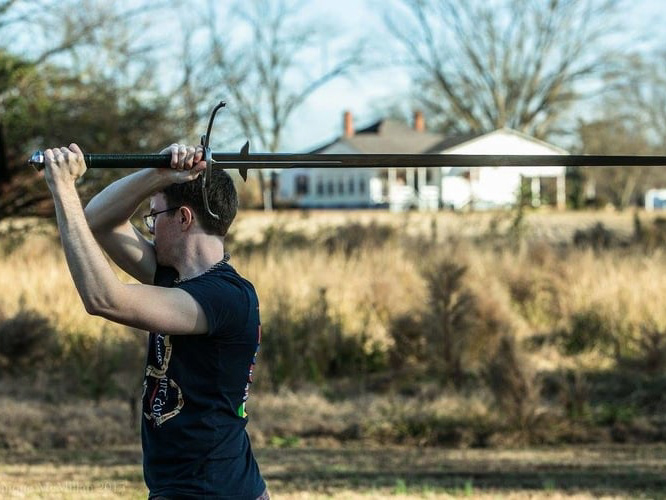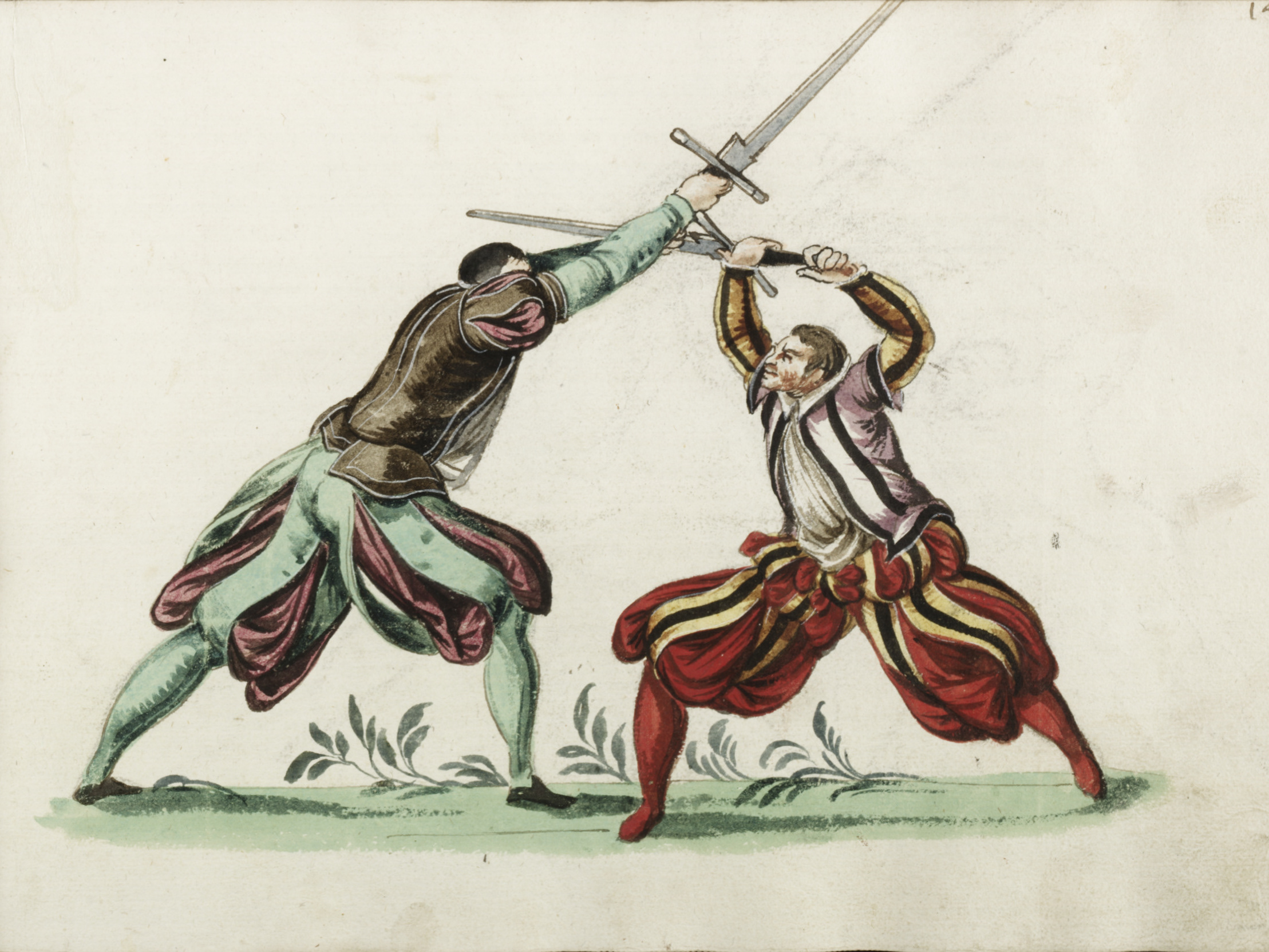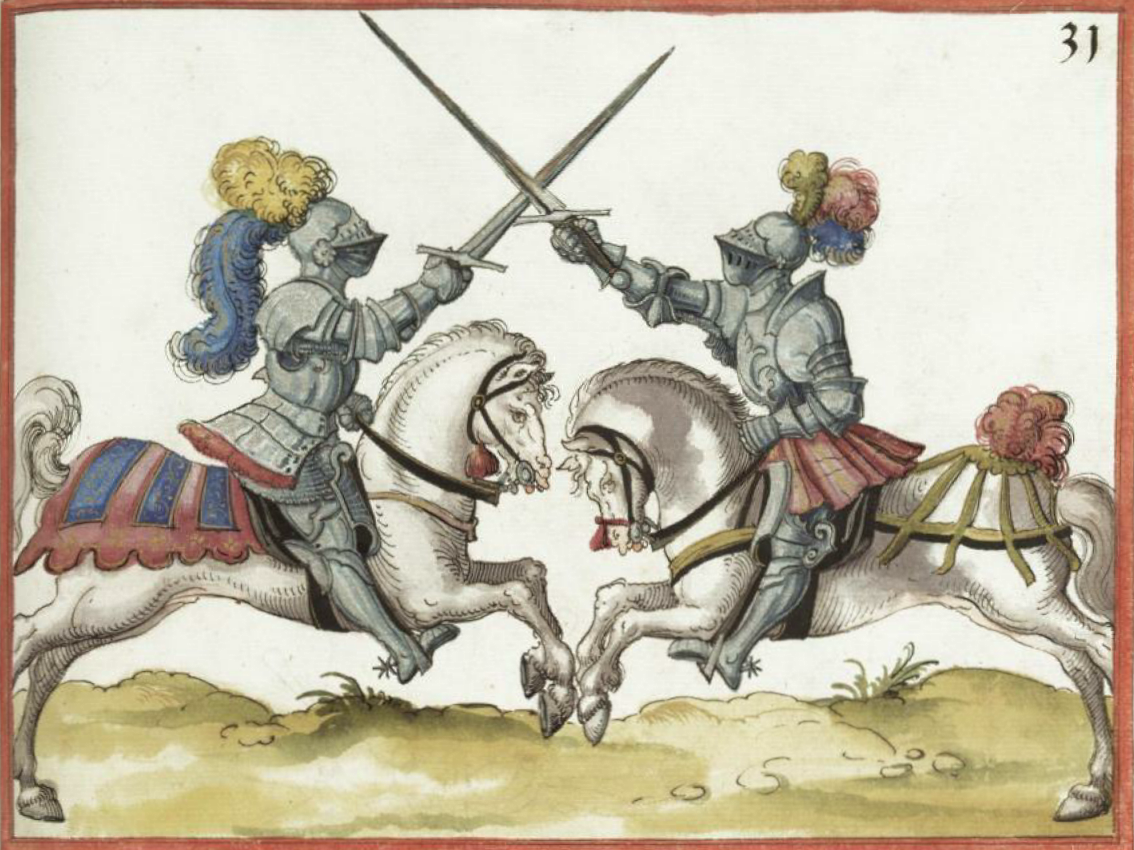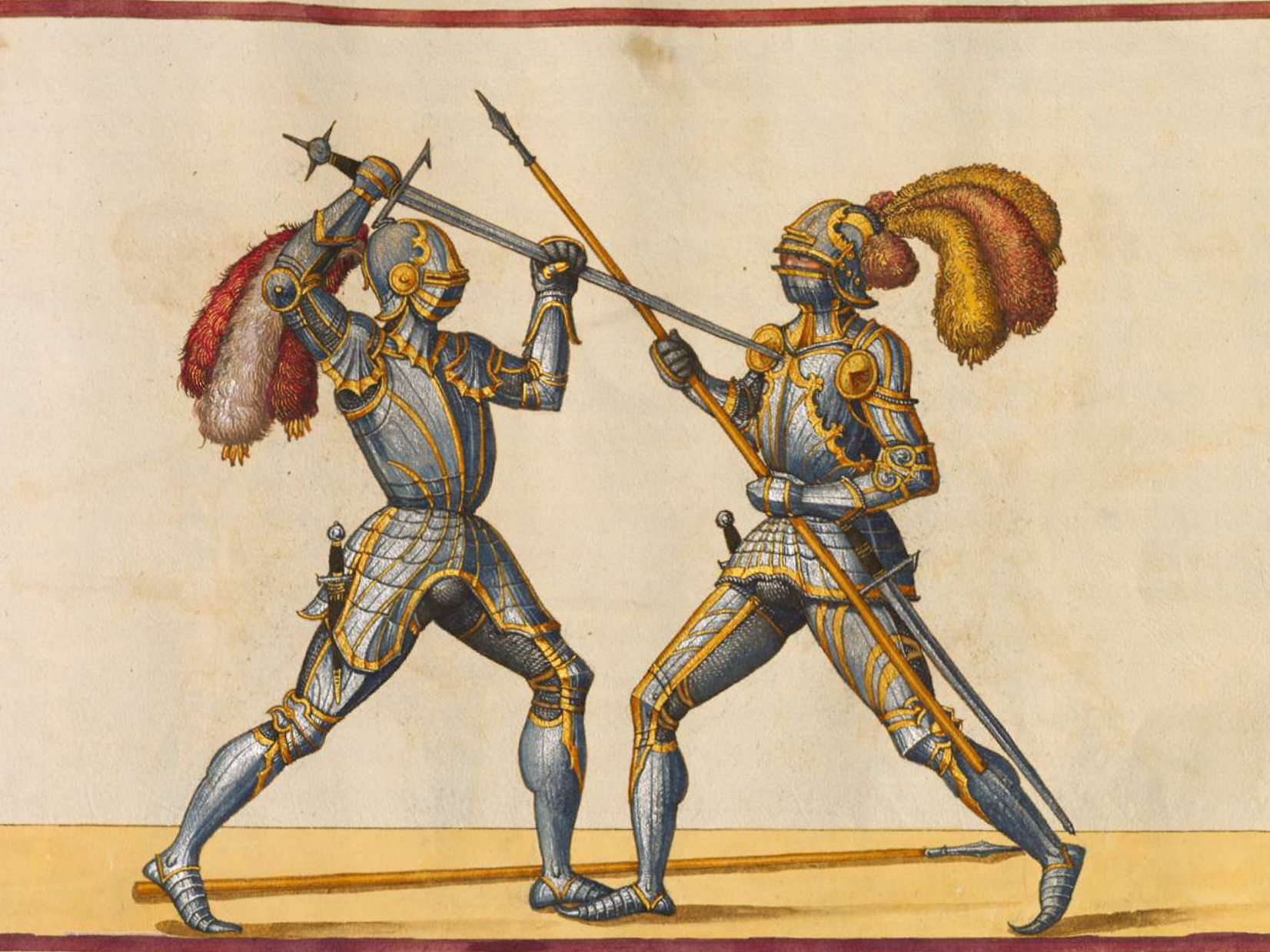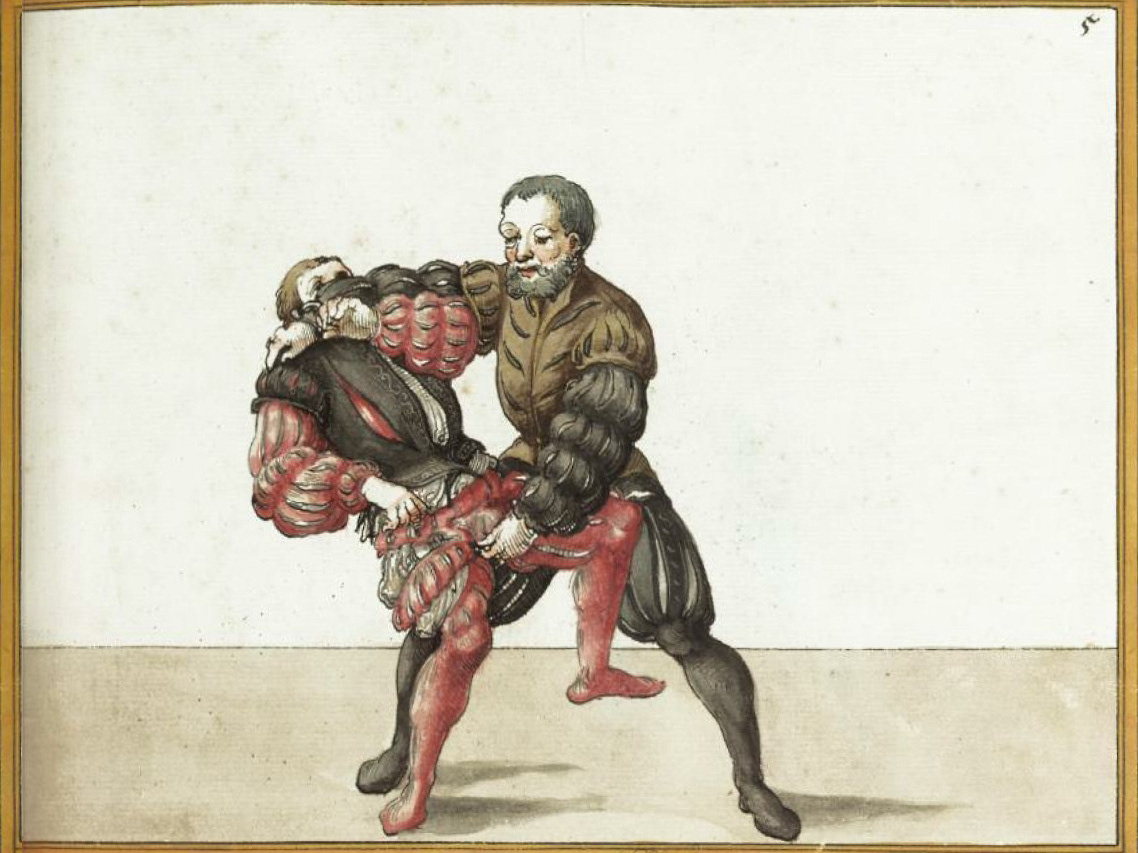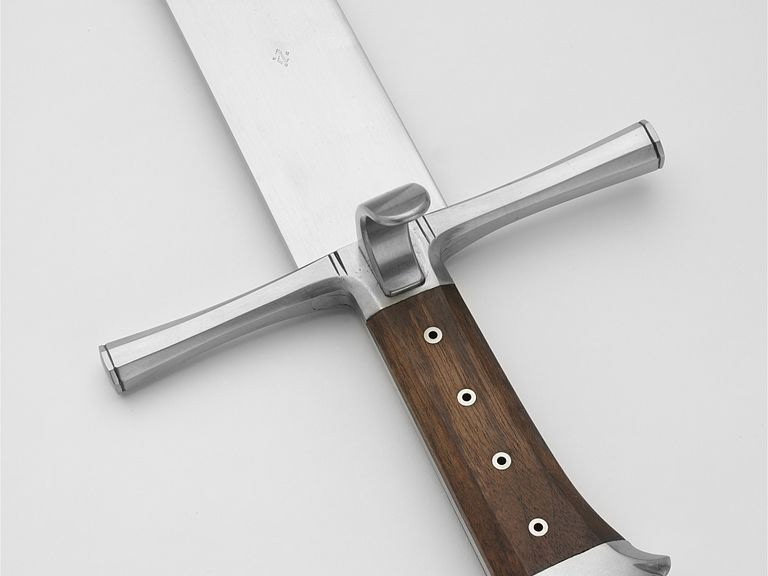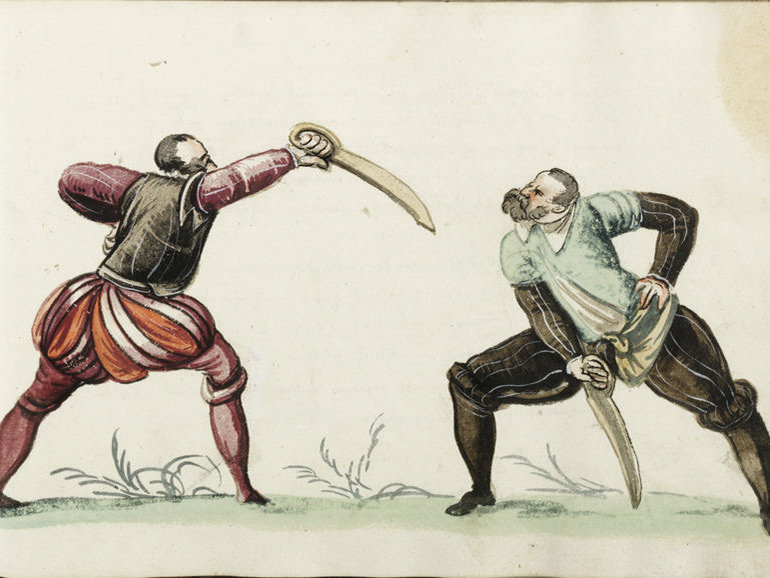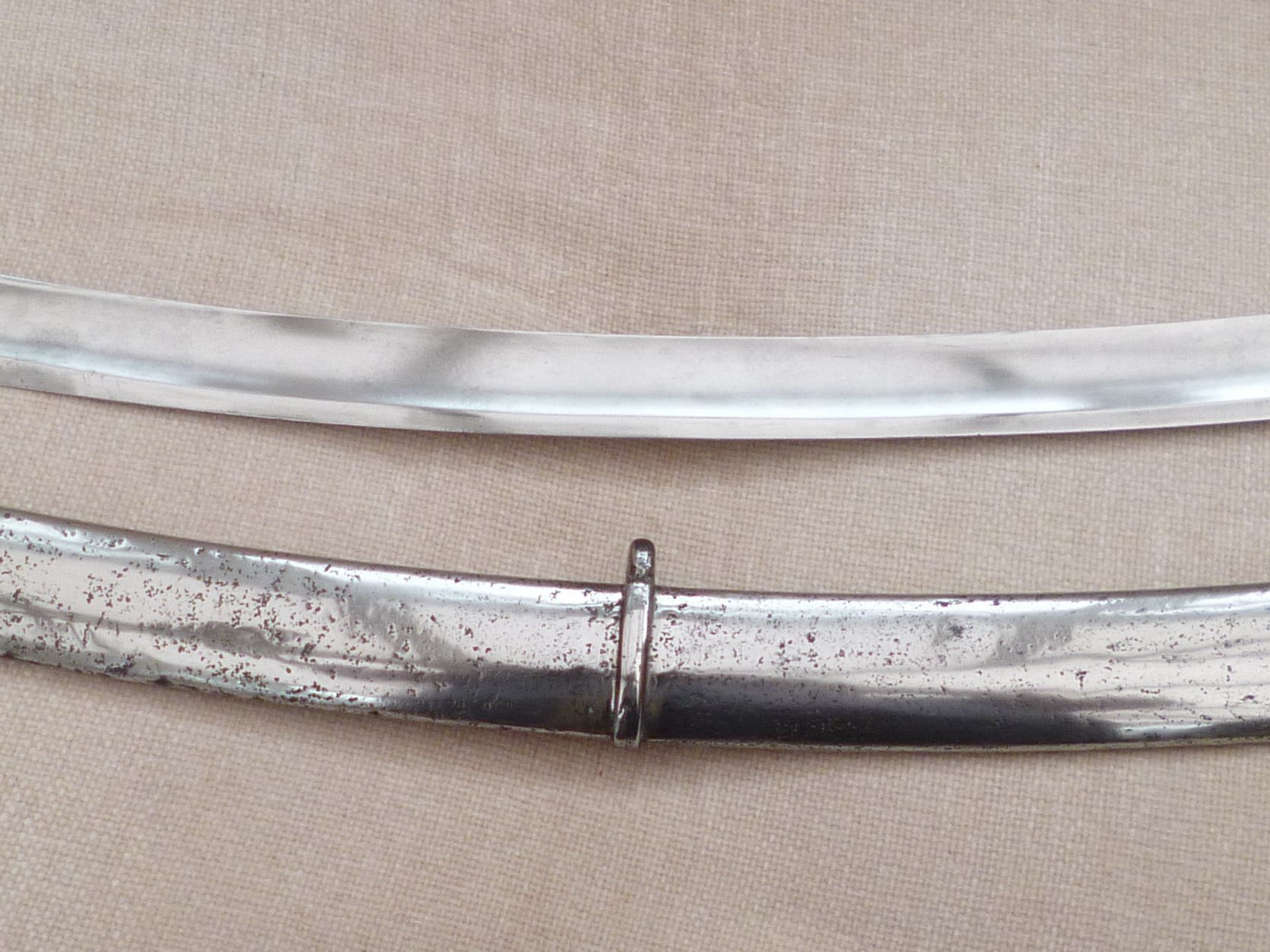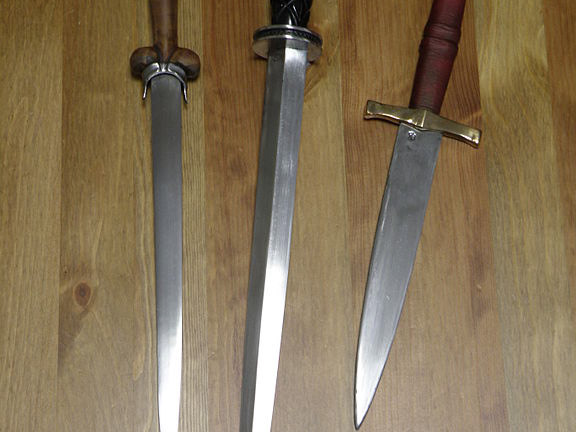Introduction
HEMA technically encompasses every historical weapon ever used in Europe. That includes the scythe, sickle, Nordic ax fighting, archery, jousting, mounted combat, and even siege techniques and equipment.
This introduction is not long enough to include all of them, but the article includes selections of Mair's “peasant weapons”, and Talhoffer’s long shield.
“Peasant Weapons”: Sickle, Scythe, Peasant Stick, and Flail
When peasants were called upon to fight, the farming tools they used were repurposed as weapons of war. Eventually, these "peasant weapons" became prevalent enough to be included in fight books such as the text of Paulus Hector Mair.[1]
Sickle
The sickle is one of the oldest agricultural tools and is designed to allow the user to harvest the stalks of a crop like rice or wheat.[2] These are easy to produce and easy to use, but time-consuming to use in the field. The sickle is small, easy to transport, and very sharp, making it a common weapon in peasant armies. Currently, Purpleheart Armory offers an excellent synthetic sickle with which to train. Reinier van Noort wrote a wonderful training manual for how to fight with the grain sickle.
An example of a sickle technique featured in Mair’s MSS Dresd.C.93/C.94, sickle, plate 3.
Courtesy of Wiktenauer.
Demonstration
A breakdown of Mair’s sickle plays.
Scythe
The scythe is an evolution of the sickle, putting a similar cutting head on a long stick. This allowed the user to stand up and engage their whole body while harvesting.[3] Not only did this make the process of harvesting go faster, but it also bestowed the scythe with some of the benefits of a polearm, namely greater reach and power.
An example of scythe fighting featured in Mair’s MSS Dresd.C.93/C.94, scythe, plate 7.
Courtesy of Wiktenauer.
Demonstration
A demonstration that something as unwieldy as a peasant’s scythe can become a deadly weapon with the right training and techniques.
Peasant Stick
The “peasant stick” is nothing more than a length of wood, like an unrefined quarterstaff. Mair applies several techniques that are similar to the quarterstaff in his treatise.
An example of two men fighting with the peasant stick.
Courtesy of Wiktenauer.
Demonstration
This video shows that even with the most elemental of weapons, complex and sophisticated martial arts are still possible.
Flail
The flail began as a farming tool to thresh corn (i.e. to beat the stalks to separate the grains from the straw).[4] As its use became more and more common among peasant soldiers, men at arms and the nobility also began to adopt it as a knightly weapon.[5]
Matt Easton provides a brief introduction to medieval flails.
Demonstration
Flails became a weapon used by knights in the 15th and 16th centuries. It gained a notable presence in the Iberian school of swordsmanship, appearing beside the Iberian Montante and using very similar movements and body mechanics. [6]
An example of flail plays from Mair.
This video shows just how effective and graceful flails can be and how similar their body mechanics are to greatswords (flail demonstration at 00:45).
Longshield
The longshield is a long shield with protrusions on the top and bottom. It was used as either a standalone weapon or wielded in the offhand while the dominant hand held a sword. It seems to have been used in duels and sparring from the 15th to the 16th centuries.
An example of the longshield being used as an independent weapon.
Courtesy of Wiktanauer.
Demonstration
This video gives an idea of how these weapons might have been used.
Peasant Weapons Sources
German
Hans Talhoffer’s Württemberg Manuscript (1467): Talhoffer lived a long and interesting life, as evidenced by his manuscripts, which cover a wide assortment of weapons, including the buckler, crossbow, dagger, flail, Messer, longshield, mace, poleaxe, spear, sword, and unarmed grappling, often both armored and unarmored, on horse and on foot, and in scenarios including tournaments, formal duels, and unequal encounters implying urban self-defense. While his captions are sparse, his longshield are some of the earliest depictions of these weapons.
Paulus Kal (1470): Kal was an initiate of the tradition of Johannes Liechtenauer and took great pains to create an honor roll of German Fencing Masters, which he styled the Fellowship of Liechtenauer. This list has proved invaluable to researchers by providing an independent confirmation of those master’s connection to the grandmaster. Though brief his longshield sections are beautifully illustrated and provide a direct application of Lichtenauer techniques to the longshield.
Paulus Hector Mair (1540): Mair was a collector of fencing manuscripts and owned over a dozen fencing manuals over the course of his life. Most of the treatises Mair published were revisions or expansions upon the works in his collection, his longshield section, in particular is a reprinting of Paulus Kal’s Fechtbuch (Cgm 1507). Instead of copying the text, Mair reproduced Kal’s images and added extensive explanations of his plays.
Works Cited
Footnotes
[1] "Flails", Arms & Armor, 2020, https://www.arms-n-armor.com/blogs/news/flails.
[2] "Sickle | Hand Tool", Encyclopedia Britannica, 2009, https://www.britannica.com/topic/sickle-hand-tool.
[3] “Sickle | Hand Tool”, Encyclopedia Britannica.
[4] "Threshing | Encyclopedia.Com", Encyclopedia.com, 2020, https://www.encyclopedia.com/plants-and-animals/agriculture-and-horticulture/agriculture-general/threshing#1.
[5] “Flails”, Arms & Armor.
[6] “Flails”, Arms & Armor.
Citations
"Flails". Arms & Armor, 2020. https://www.arms-n-armor.com/blogs/news/flails.
"Sickle | Hand Tool". Encyclopedia Britannica, 2009. https://www.britannica.com/topic/sickle-hand-tool.
"Threshing | Encyclopedia.Com". Encyclopedia.com, 2020. https://www.encyclopedia.com/plants-and-animals/agriculture-and-horticulture/agriculture-general/threshing#1.
Written by Nicholas Allen, founder and former head instructor of the VCU HEMA club.
Edited by Kiana Shurkin, xKDF
Historical sources fact-checked by Michael Chidester, Editor-in-Chief of Wiktenauer
